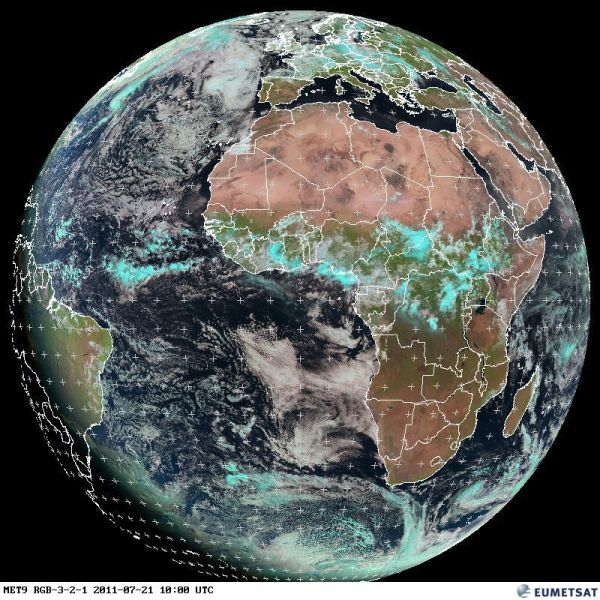Basic idea behind RGBs
The three colors red, green and blue are allocated for three MSG channels or, if appropriate, channel differences. All other colors are generated as a combination of these three basic colors. The choice between channels and channel differences depends on the features that are being looked for.
This shall be demonstrated with the so-called Natural Color RGB, which is composed from the channels 03 (R), 02 (G) and 01 (B). Each of these three visible channels contains information about reflected sunlight (and consequently the optical thickness of clouds), but each channel also adds its own physical specialty:
Ch 03 (1.6 µm): particle phase and size (water, small and bigger ice droplets)
Ch 02 (0.8 µm): "greenness" of vegetation
Ch 01 (0.6 µm): optical thickness
The next figure shows the resulting colors for four typical features in the "Natural Color RGB"
When using RGBs, it is important to understand which qualities the individual channels or channel differences provide.




